Flower Destinations Perfect for Spring
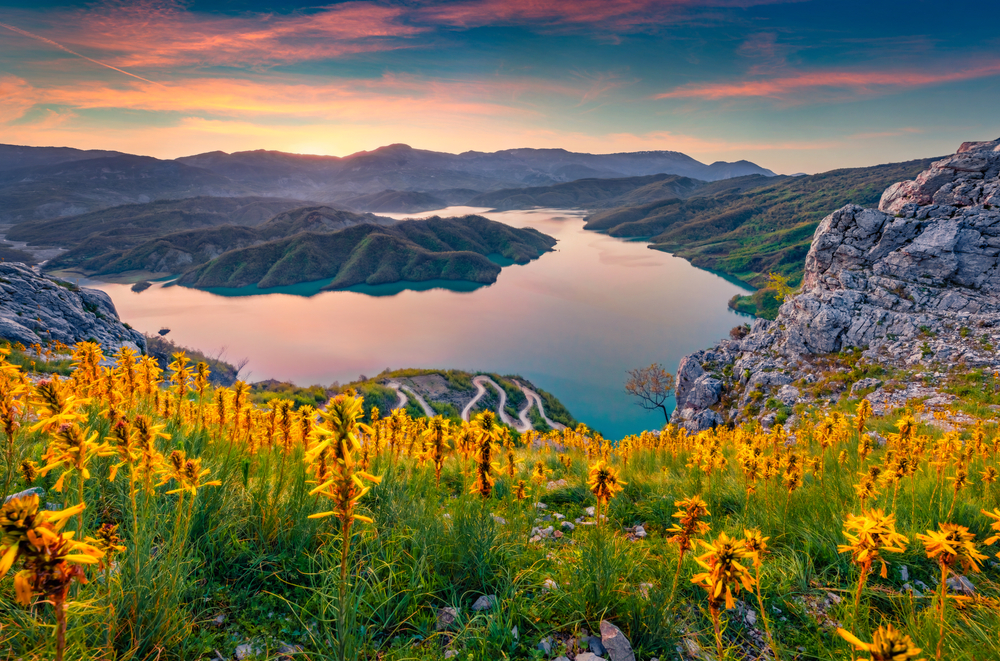
Ever tried to time a tulip or cherry blossom trip and missed peak bloom by a week? Painful. One warm snap, one cold front, and the perfect week you circled months ago suddenly shifts. If you’re dreaming of tulips, cherry blossoms, wisteria, or carpets of bluebells this spring, I’ll help you pick the right place at the right time—without burning hours on conflicting forecasts or elbowing your way through crowds at 9 a.m.
I’ve mapped out the top spring flower destinations I personally plan for on TravelSites.com: when to go, how to avoid the rush, what to book first, how to keep costs sensible, and the simple backup moves I use when nature runs early or late. Spring flowers are fleeting—but your trip doesn’t have to be a gamble.
The common pains of planning a flower trip
Spring bloom-chasing is a special kind of logistics puzzle. The frustrations are real:
- Unpredictable bloom windows: Peak can swing by 1–2 weeks year to year. In Washington, D.C., peak cherry blossoms have landed anywhere from mid-March to mid-April; the National Park Service tracks it because it changes so much.
- Weather whiplash: Warm spells push blooms early; late frosts can stall them. Phenology data shows spring events trending earlier and more variable—see the USA National Phenology Network for patterns you can actually use.
- Crowds and sold-out slots: Top gardens can feel packed by mid-morning. Keukenhof alone draws over a million visitors each season (official site), so timing your entry is everything.
- Transport snags: Limited parking, slow traffic near popular parks, and bus bottlenecks at peak hours drain time and energy.
- Allergies and comfort: High pollen days, muddy trails, and temperature swings can turn a postcard day into a slog if you’re not prepared.
- Photo letdowns: Harsh midday light, blocked views, and trampled fields make “was this worth it?” a fair question.
What you’ll get here (my promise)
I keep this guide tight and traveler-first. Expect:
- Best-week windows based on multi-year patterns (and what to do if you’re a little early or late).
- Crowd-avoidance strategies that actually work—first-entry tactics, smarter routes, and sunrise spots.
- Budget notes that cut costs without cutting the fun—transit combos, where to stay, and what to book ahead.
- Simple backups nearby when timings slip—so you’re never stuck staring at bare branches.
- Photo and etiquette tips for great shots that respect farmers, parks, and other travelers.
If a place is jaw-droppingly beautiful but a nightmare to visit at peak, I’ll say so—then show you an easier alternative that delivers the same “wow.”
How I pick and verify these spots
Spring trips live or die on good information. I rely on:
- Official trackers and local updates: D.C.’s NPS Bloom Watch, Japan’s sakura reports and forecasts, Keukenhof flowering reports, and UK National Trust updates for bluebells.
- Multi-year peak patterns: I look at 5–10 years of peak dates to find the “most likely” window rather than chasing a single forecast.
- On-the-ground voices: Garden staff, local guides, farmers, and photographers who share what’s actually happening week to week.
- Access and sanity checks: Easy transport, nearby stays, family-friendliness, and crowd flow. A dream scene loses its magic if it takes 4 transfers and a fight for parking.
Weather and climate shifts mean variability is the norm. Several long-term studies note earlier spring events across temperate regions; the takeaway for travelers is simple: build in a little flexibility and use current local sources—don’t rely on last year’s Instagram caption.
How to use this guide
Make the most of your spring window with a simple plan:
- Start with your dates. Skim the destination sections that match your month and region.
- Note the “best week” windows and keep a 2–3 day flex if you can—this alone boosts your odds of hitting peak.
- Book the bottlenecks first: limited-entry gardens, first-morning time slots, and transit passes that sell out fast.
- Save a nearby Plan B that blooms a bit earlier or later (I’ll point those out under each destination).
- Use the toolkit near the end for packing, allergy help, and trusted links you can check the night before.
Think of it like this: pick your bloom, grab your best-week window, lock in the early entries, and keep one backup around the corner. That’s how you get the colors without the chaos.
Ready to see how to snag first-entry serenity among the most famous tulips on earth—and the exact week that usually nails it? Keep going.
Netherlands Tulip Country: Keukenhof + Bollenstreek Fields
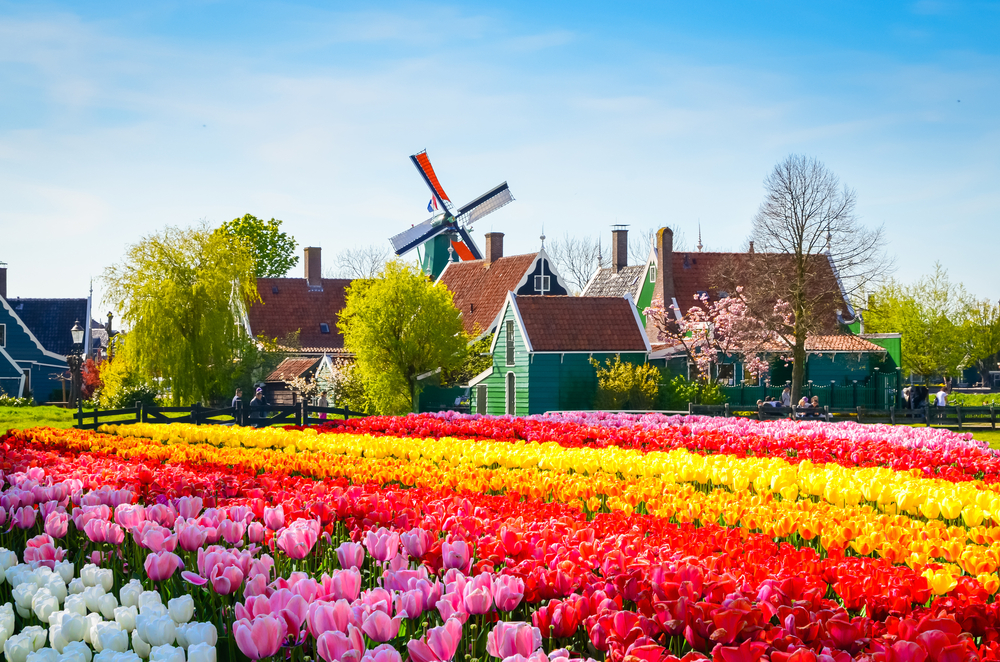
If spring has a postcard, it’s this: endless tulip rows, a windmill turning in a breeze, and Keukenhof’s color-blocked gardens just 30 minutes from Amsterdam. Every year I watch the bloom curve like a hawk, then pick a week where fields and gardens overlap so you don’t have to gamble.
“You don’t ‘catch’ tulips. You make a smart plan, then give spring one flex day to work its magic.”
Best time to go (and what if you’re early/late)
Most years, the sweet spot is mid-April when both Keukenhof and the Bollenstreek fields pop. Keukenhof runs mid‑March to mid‑May and draws over a million visitors in just eight weeks, so timing matters as much as where you stand.
- Early April: Cooler spells keep field colors patchy, but Keukenhof’s indoor pavilions are powerhouse backups. Make a beeline for the Willem-Alexander and Oranje Nassau halls, plus the Beatrix pavilion for orchids. You’ll still walk out with “peak” photos.
- Mid to late April: Fields around Lisse, Hillegom, and De Zilk are usually at their best. By late April/early May, growers begin “topping” (koppen)—removing flower heads so bulbs grow stronger, which is the whole point for farmers. Expect some brilliant blocks mixed with freshly topped rows.
- If you miss it: Shift to the Noordoostpolder Tulip Festival in Flevoland (typically late April–early May; car routes are well-marked), or book an early weekday visit to the Aalsmeer Flower Auction to watch the global flower trade in action from the visitor gallery.
Pro tip: Weekdays beat weekends, and avoiding Easter and King’s Day (27 April) can be the difference between serene and swamped.
How to see it without crowds
- Keukenhof strategy that actually works: Book the first timeslot (8:00). Enter and walk straight to the back gardens before looping forward. If the main gate is jammed, check whether the “Extra Entrance” is open and use that. Most tour buses spike the crowds from 10:00–14:00; I often exit for a field ride, then re-enter after 15:30 when it thins again.
- Field time without the scrum: Rent a bike in Lisse from Rent‑a‑Bike Van Dam (they hand out color‑coded routes, 5–25 km). Quiet lanes I love: Loosterweg-Zuid, Oosteinde (De Zilk), and 2e Poellaan. Follow signed routes and skip anywhere you see “No trespassing” or ropes; those are working farms.
- Golden moments: Sunrise in mid‑April is around 6:45–7:00. An early spin through De Zilk gives you light, lines, and the sound of your tires on the path—no bus chatter.
I’ve tested this pattern for years. It’s simple, calm, and it gets you the photos you came for without feeling like you moved in a crowd all morning.
Budget and logistics
- Transit made easy: Skip the car. Grab a Keukenhof combi (bus + timed entry) from Amsterdam RAI (bus 852), Schiphol (858), or Leiden Centraal (854). Expect roughly the cost of a regular ticket plus bus—around the €30–40 range all-in for adults, while garden-only tickets are typically around €20. Use contactless (OVpay) on Dutch transit if you don’t have an OV‑chipkaart.
- Where to base: I often stay in Leiden or Haarlem—both beautiful, with trains every few minutes, and hotel rates that tend to sit 20–30% under central Amsterdam in spring. From Leiden to Keukenhof is a short bus ride.
- Food and queues: Pack a picnic to save time and money. Keukenhof has lawns and benches where a sandwich and stroopwafel feel like a luxury. Coffee lines peak late morning—another reason to arrive early.
- Lockers and bags: Small lockers are sometimes available on-site, but I prefer stashing luggage at Leiden Centraal or Schiphol if I’m in transit. Parking at Keukenhof costs a small fee if you self‑drive.
One more angle: weekdays not only cost less, they feel less frantic. Keukenhof’s own data points to late morning and early afternoon as the busiest windows—plan around that and you’ll feel like you found a secret.
Photo and etiquette tips
- Stay off the soil: Bulbs bruise easily and a single footprint can ruin rows. Use a zoom (or your phone’s 2x/3x) from the road or bike path to compress those stripes into perfect frames.
- Early/late light wins: Soft side light picks up petal texture. After rain, colors are saturated—bring a microfiber cloth for your lens.
- Move smart: Get low for long lines, or climb a small bridge or dike path for stripes that read like a flag. In Keukenhof, work the windmill side paths and ponds for reflections.
- Respect the rules: Don’t pick flowers, don’t cross ropes, and skip drones—much of the area is near controlled airspace, and flying over people or fields is a no-go.
- Quick camera tweaks: Tap‑to‑expose and slide down a touch (‑0.3 EV) to keep reds from blowing out; a polarizer helps tame glare on shiny leaves.
Farmers top blooms to send energy back to the bulb—that’s how next year’s tulips get bigger and better. It’s not vandalism; it’s the business. Understanding that makes the landscape feel more alive, not less.
Family-friendly extras
- Keukenhof with kids: There’s a playground, a small petting zoo, and a hedge maze—perfect for a mid-morning reset.
- Small farms with extras:De Tulperij (Voorhout) offers viewing platforms, short tours, and coffee; The Tulip Barn (Hillegom) sets up fun photo spots; Annemieke’s Pluktuin lets kids pick a bouquet in a designated field.
- Make it a play day: Pair a half‑day among the fields with Linnaeushof (Bennebroek), Europe’s largest playground. You’ll thank me at bedtime.
One last thought before we trade stripes for blossoms: if the tulip rows are the definition of order, what happens when the petals start to float through a city like confetti? I’ve got a sunrise plan for that—plus a wisteria tunnel that looks unreal. Want the calmest hour and the right base when the forecast shifts by three days? Let’s talk cherry blossoms next.
Japan Cherry Blossoms (Sakura) + Wisteria Arches
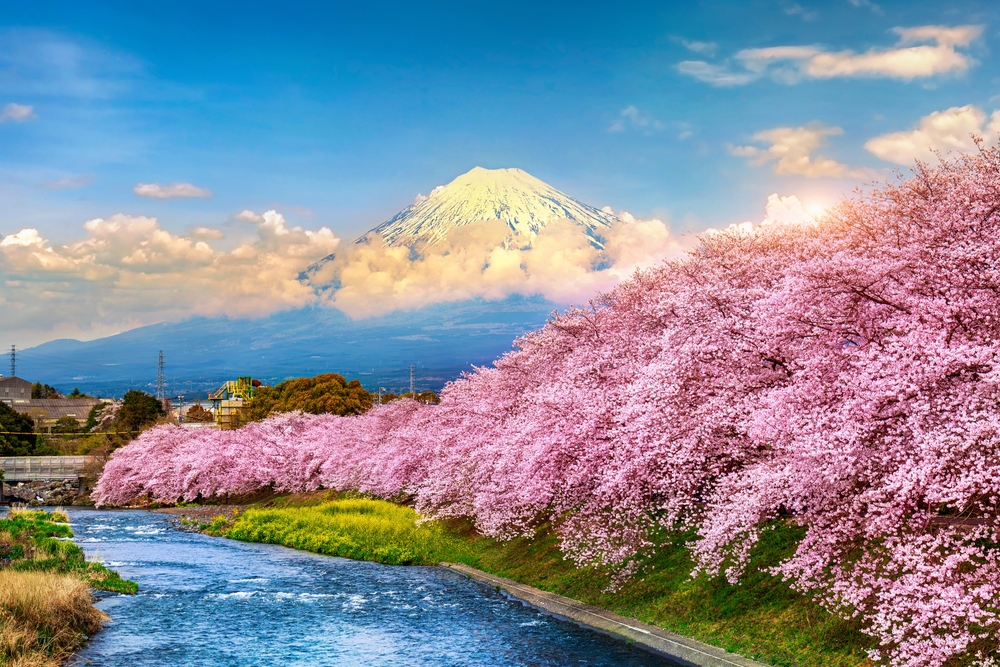
Every spring, I chase that first blush of pink like a kid runs toward the ice cream truck. One gust of wind and it’s gone—that’s the thrill and the stress. As the saying goes:
“Under cherry blossoms, there are no strangers.”
If you’re aiming for Tokyo and Kyoto, timing is everything—and there’s a smart way to stack the deck in your favor and have a wisteria Plan B ready to go.
Forecasts and flexible plans
I watch two things: official forecasts and multi-year trend lines. Climate data shows blooms are edging earlier—Kyoto hit its earliest full bloom in 1,200 years on March 26, 2021 (historical records compiled by researchers and reported widely, for example by the BBC). That’s why I build in wiggle room.
- Trackers I trust: the rolling forecast on Japan-Guide, updates from Weathernews, and local park posts.
- My flexible window: I keep 2–3 “float” days to shift between Tokyo and Kyoto or pivot north. Free cancellation rates are worth it this season.
- Where I book beds: in neighborhoods with multiple parks—Tokyo’s Ueno or Meguro; Kyoto’s Arashiyama or around Okazaki Canal—so I can walk to blooms even if trains are packed.
- Simple rhythm that works: Day 1 scouting walk at dusk (soft light hides gaps), Day 2 headline spot at sunrise, Day 3 backup target (another park, a higher-elevation canal, or a wisteria run).
Small trend tip: first flowers usually appear in Tokyo a few days before Kyoto; full bloom follows about 5–7 days after opening. A fast warm spell can compress that to 3–4 days—hence the float days.
Where to go in Tokyo and Kyoto
Tokyo (fast trains, huge payoffs):
- Chidorigafuchi Moat: Petal tunnels along the water with optional rowboats. Go at first light; if you must go later, walk straight to the outer bends first.
- Meguro River: Over a kilometer of trees arching over the canal. Best at sunrise or for yozakura (night) when lanterns glow. Weekdays or nothing.
- Shinjuku Gyoen: Dozens of varieties with staggered timing—your hedge if the city peak is wobbly. Entry fee; alcohol and big tarps aren’t allowed. Expect special early openings during peak—check the official site.
- Lower-key options:Kitanomaru Park (next to the Imperial grounds) and Koishikawa Korakuen add calm paths and classic bridges; Sumida Park at sunrise gives Skytree-in-bloom photos with room to breathe.
Kyoto (romance with a side of calm…if you’re early):
- Philosopher’s Path: Narrow canal lined with trees and stone bridges. Arrive before 7 a.m.; start at the northern end and walk south.
- Maruyama Park: The iconic weeping cherry is magic at night. I swing by late evening after an early Arashiyama morning to split the crowds.
- Arashiyama Riverside: Riverbanks and side streets pop before tour buses arrive. Combine with the bamboo grove at sunrise, then hug the waterline for blossoms.
- Quiet favorites:Keage Incline (old rail tracks framed by sakura), Okazaki Canal boat rides, and sprawling lawns at Kyoto Imperial Palace Park where families spread small blankets—no elbow wars.
If you miss peak
Don’t sweat it; you’ve got outs. I keep two pivots ready: go north for late sakura or switch to wisteria.
- Head north with the blossoms:
- Sendai:Mikamine Park and Nishi Park are usually a week or two behind Tokyo. 90 minutes from Tokyo by Tohoku Shinkansen.
- Aomori:Hirosaki Castle Park is a stunner (late April–early May), with moats filled with petal “pink snow.” About 3–4 hours from Tokyo via Shinkansen to Shin-Aomori plus a local hop.
- Bonus reach: Hokkaido (Sapporo’s Maruyama Park, Matsumae) slides into early–mid May.
- Or pivot to wisteria:
- Kawachi Fuji Garden (Kitakyushu): Two wisteria tunnels that feel straight out of a dream, typically late April–early May. Timed tickets (often via Lawson’s Loppi machines) are required in peak—check the garden’s updates and secure a slot early.
- Ashikaga Flower Park (Tochigi): Easy from Tokyo (JR lines to Ashikaga Flower Park Station, right at the gate). The 150-year-old “Great Wisteria” peaks around Golden Week with night illuminations. Entry pricing flexes by bloom—watch the daily status and go weekday evenings for breathing room.
Pro move: if sakura is fading in Tokyo, Ashikaga is often just hitting its stride.
Etiquette and crowd tips
- Leave no trace: Bins can be scarce; I carry a small trash bag and pack it out.
- Respect the trees: no branch-shaking, no climbing roots, no picking blossoms—ever.
- Tarps tidy: Keep blankets compact; aisles and paths must stay clear. Some parks ban alcohol—follow posted rules.
- Tripods and drones: Skip both in busy spots; guards will ask you to put them away.
- Beat the jam: Trains > taxis when roads clog. I tap in with a PASMO/Suica and ride one stop beyond the headline station to enter from a quieter side.
- Time it smart: sunrise for calm; weeknights for yozakura light-ups; avoid weekend middays unless you like human pinball.
What to pack for spring swings
- Layers: breathable base, light sweater, rain shell.
- Compact umbrella and a microfiber cloth for lenses after drizzle.
- Comfortable, water-resistant shoes—petal mush is real.
- Allergy help: antihistamines, a mask, eye drops. Check daily pollen counts in your weather app.
- Small tarp/blanket for hanami, plus hand wipes and a trash bag.
- Heat packs (kairo) from any convenience store—lifesavers during chilly night illuminations.
- IC card (PASMO/Suica), phone eSIM or pocket Wi‑Fi, and a coin pouch for lockers.
I plan sakura like a heist: multiple exits, tools ready, and great timing—so the experience feels effortless in the moment. If Japan’s not on your calendar this year, want my exact strategies for catching peak blossoms closer to home—and how I loop the crowds in Washington, D.C. instead of getting stuck in them?
Washington, D.C. and U.S. Cherry Blossom Alternatives
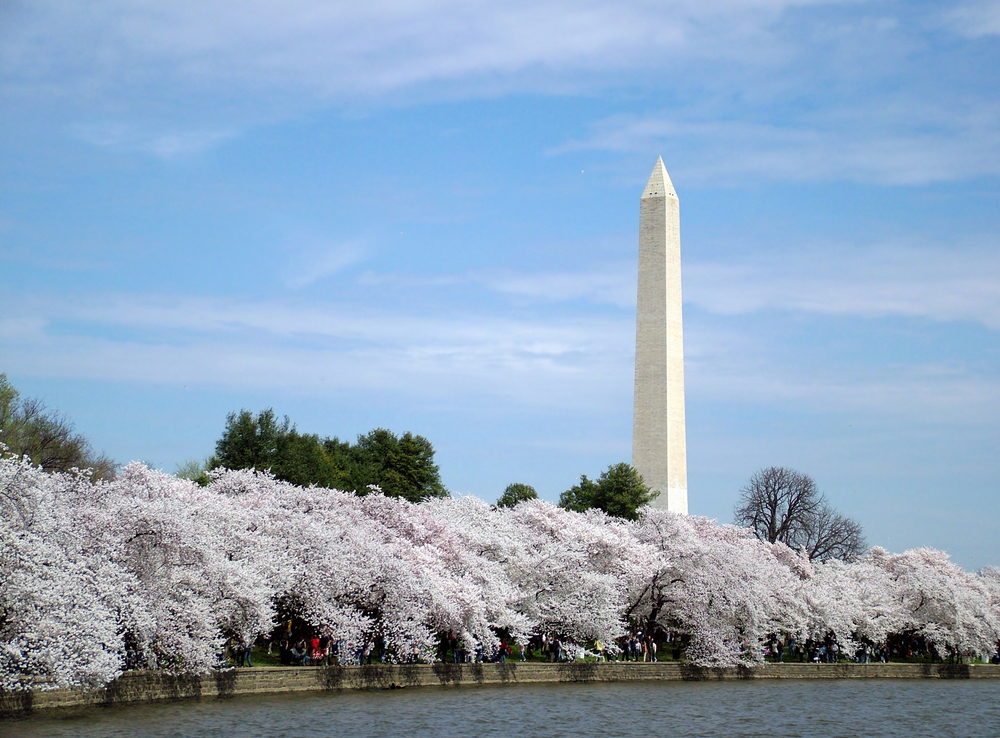
“Every spring is the only spring—a perpetual astonishment.” — Ellis Peters
If you’ve ever landed in Washington, D.C. a few days too early—or late—you know that cherry blossoms don’t care about our calendars. They follow temperature, not ticket times. The trick is stacking the deck in your favor with real-time updates, smart routes, and solid backups that feel just as special.
Hitting D.C. at peak (or close enough)
Peak bloom for the Yoshino cherries around the Tidal Basin typically lands late March to early April, but it moves. The National Park Service defines peak as 70% of blossoms open on the Yoshino trees, and they publish stage-by-stage updates (NPS Bloom Watch)—my must-follow tab each morning.
- Go at sunrise. You’ll beat tour buses, snag cleaner reflections, and have a shot at mirror-calm water. I start on the Jefferson Memorial side and work clockwise.
- Watch the stages. “Puffy white” usually means you’re 1–3 days from peak. If petals start to fall (sakura snow!), shift to spots with later varieties.
- Timing trends are shifting earlier. NPS records going back to 1921 show peak dates creeping forward as spring temps warm—another reason to trust live updates over fixed dates.
- If you’re late for Yoshino: chase the Kwanzan (double-petal) cherries along East Potomac Park/Hains Point—they typically bloom about a week after the Tidal Basin.
Crowd-avoidance routes
- Enter from the Arlington Memorial Bridge side. Most visitors start at the Washington Monument side. Crossing from Arlington puts you near the Lincoln/Reflecting Pool side with gentler foot traffic early.
- Bike the Mount Vernon Trail. Rent a bike in Arlington or Old Town Alexandria and roll north for quieter, skyline-with-blossoms frames. Lock at a rack and walk final loops.
- Metro in. Parking is tight and stressful. Use Smithsonian, L’Enfant Plaza, Arlington Cemetery, or Foggy Bottom and walk in. The DC Circulator National Mall route is a helpful backup when feet give out.
- Photographer’s flow: Sunrise at Jefferson → low, wide shots near the cherry-lined seawall → quick hop to MLK Jr. Memorial for side-light → bail before 9 a.m.
Family-friendly cherry picks
If the Tidal Basin feels like a lot with strollers, these are calmer without losing the magic:
- U.S. National Arboretum — Spacious paths, parking, and room to roam. The Bonsai & Penjing Museum is a fun surprise. Free entry. Check seasonal highlights at the official site.
- Kenwood (Bethesda, MD) — Residential lanes of blossoms arching overhead. Go early on weekdays, keep voices low, and respect residents. Parking is limited—walk in from nearby streets.
- Hains Point (East Potomac Park) — Later-blooming Kwanzans, big lawns, easier bathroom access, and space for kids to run.
Great backups beyond D.C.
Cherry blossoms aren’t only a D.C. story. If your dates don’t match the Tidal Basin, these alternatives often hit peak across late March to mid-April (and sometimes later at higher latitudes):
- Brooklyn Botanic Garden (NYC) — Multiple varieties mean a longer window. Their real-time Cherry Watch map is a model for transparency.
- Philadelphia, Fairmount Park — Around the Horticulture Center and Shofuso Japanese House & Garden for classic scenes and a calm vibe.
- San Francisco Japantown — Pair the Peace Plaza pagoda with early-evening light; blossoms run later if coastal breezes keep temps mild.
- Seattle, UW Quad — Iconic canopy of aging Yoshinos. The university posts updates here: UW Cherry Blossoms. Sunrise is magic; weekdays win.
- Vancouver (BC) — Neighborhood streets citywide plus the Vancouver Cherry Blossom Festival bloom map. A great Plan B if you’re already headed to the Pacific Northwest.
Accessibility notes
- Tidal Basin: Scenic but the path narrows and can be uneven and crowded. Check NPS accessibility info and consider starting earlier than the rush.
- National Arboretum: Smoother routes, curb cuts, accessible restrooms, and parking. Much less jostling, especially on weekdays.
- Botanic gardens (Brooklyn, Philadelphia, and others) usually maintain paved paths, ramps, and clear signage—great for wheels and knees.
One more nudge from the data column: the National Cherry Blossom Festival draws well over a million visitors most years, so small choices—sunrise starts, side entrances, and Metro—add up to a calmer morning and better photos. And if petals come early or late, those backup cities are ready to save your trip.
Ready for a place where tulips don’t just line a pond—they take over an entire city? How about millions of blooms set against minarets and the Bosphorus, plus ferries between photo stops?
Istanbul Tulip Festival (Lale): A City in Bloom
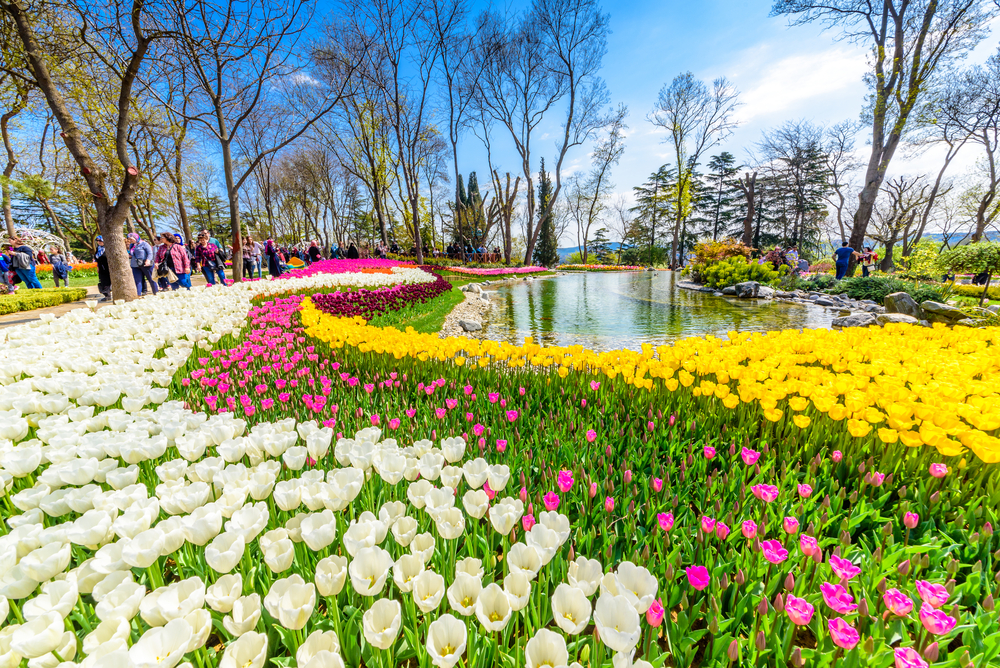
April in Istanbul feels like the city dressed up just for you. Beds of tulips blaze under minarets, parks turn painterly, and the Bosphorus breeze moves petals like confetti. Tulips were once a royal obsession here, and the festival brings that era back—no stuffiness, just color at every turn.
“Color is a power which directly influences the soul.” — Wassily Kandinsky
That’s not just pretty sentiment. A peer‑reviewed study in Evolutionary Psychology found flowers trigger immediate and lasting boosts in mood and social connection—yes, science agrees with your grin in Emirgan (Haviland‑Jones et al., 2005). So let’s put you where the color hits hardest, when light and crowds line up in your favor.
Where the tulips shine
- Emirgan Park (Emirgan Korusu): Hillside terraces stacked with bold color blocks, winding paths, and Bosphorus vistas. It’s the festival’s flagship—give it a full morning.
- Gülhane Park: Historic grounds below Topkapı Palace. Gentle slopes, tree-filtered light, and long tulip borders that glow in late afternoon.
- Sultanahmet Square: Snap tulip beds with the Blue Mosque and Hagia Sophia as your backdrop. Some years feature a spectacle “tulip carpet” in the Hippodrome—check the city’s announcements for dates and size.
- Yıldız Park: Quieter, wooded, and romantic. Bridges, ponds, and uphill paths that reward you with sweeping views over Beşiktaş.
Timing: The sweet spot is usually the first three weeks of April. Warm springs can push blooms earlier; cooler snaps nudge them later. I keep an eye on the official tourism updates and the city’s announcements: Visit Istanbul and GoTürkiye.
Easy photo loops and timing
- Start at first light in Emirgan: Enter at the upper gates, work your way across the top terraces, then zigzag down toward the Bosphorus. You’ll beat the bus tours and catch soft highlights on petals.
- Water-to-lunch move: From Emirgan, walk to the ferry pier and ride down the Bosphorus—switch at Üsküdar—to Kadıköy. Grab lunch at a local favorite like Çiya Sofrası or graze the market streets. Then tram or ferry back toward the historic core.
- Golden hour at Gülhane: Return to Gülhane Park two hours before sunset. The angled light through the plane trees deepens reds and purples, and paths are calmer.
- Blue-hour icons: If you’re chasing the classic mosque backdrop, reach Sultanahmet Square 30–45 minutes before sunset. Stay through blue hour for balanced skies and lit domes.
Quick camera tweaks that help: – Set white balance to “Cloudy” for warmer tones. – Use a circular polarizer to control glare on waxy petals. – Shoot from knee-height to layer beds and hide footpaths.
Pair flowers with culture and food
One of my favorite things here is how easily you can stitch color with history:
- Gülhane + Topkapı: Stroll the tulips, then step into Ottoman court life at Topkapı Palace. The shift from open-air color to tilework and courtyards is a mood in itself.
- Sultanahmet Square: After your flower fix, wander to the Blue Mosque and Hagia Sophia. They’re a few minutes apart, and tulip beds frame both.
- Snack trail: Grab a warm simit (sesame ring) from a cart, then a tea in a tulip-shaped glass—cheeky, yes, but it makes a great photo with blurred blooms behind it.
- Asian-side breather: Post-Emirgan, head to Kadıköy’s Moda seaside for a slower afternoon walk and sunset over the European skyline.
Costs, safety, and transport
- Entry: Parks are free; displays are open all day.
- Transit: Load an Istanbulkart at metro/tram kiosks and use it on trams, metro, buses, and ferries. It’s contactless and cheaper than single tickets.
- Easy routes:
- To Emirgan: Bus from Beşiktaş or Kabataş along the Bosphorus; ride is scenic and drops you near the gates.
- To Gülhane/Sultanahmet: Tram T1 to Gülhane or Sultanahmet stops, then walk a few minutes.
- To Yıldız Park: Short taxi or uphill walk from Beşiktaş; expect slopes inside the park.
- Safety: Spring is lively and welcoming. In crowded tram cars and busy squares, keep bags zipped and in front. Avoid stepping into flower beds—there are fines and it damages the displays.
- Accessibility: Sultanahmet Square and lower Gülhane paths are flat. Emirgan and Yıldız are hilly with benches; allow extra time if slopes are a concern.
Insider window: Weekdays before 10 a.m. are the calmest across parks. If rain hits, don’t bail—wet petals are saturated and paths clear out. I’ve had some of my best festival photos after a light shower.
April also means tree pollen in the city (plane trees are common). Tulips themselves aren’t big airborne culprits, but if you’re sensitive, pack an antihistamine and plan café breaks. The flowers will still work their mood magic—that part’s been measured.
Ready for a quieter kind of color—carpets of blue under ancient oaks? Keep going; next up I’m sharing exactly when to hit England and Wales for bluebells, the paths that photograph best, and how to avoid the “trampled patch” problem. Curious which woods I rate over the famous ones?
England and Wales Bluebells + Grand Gardens
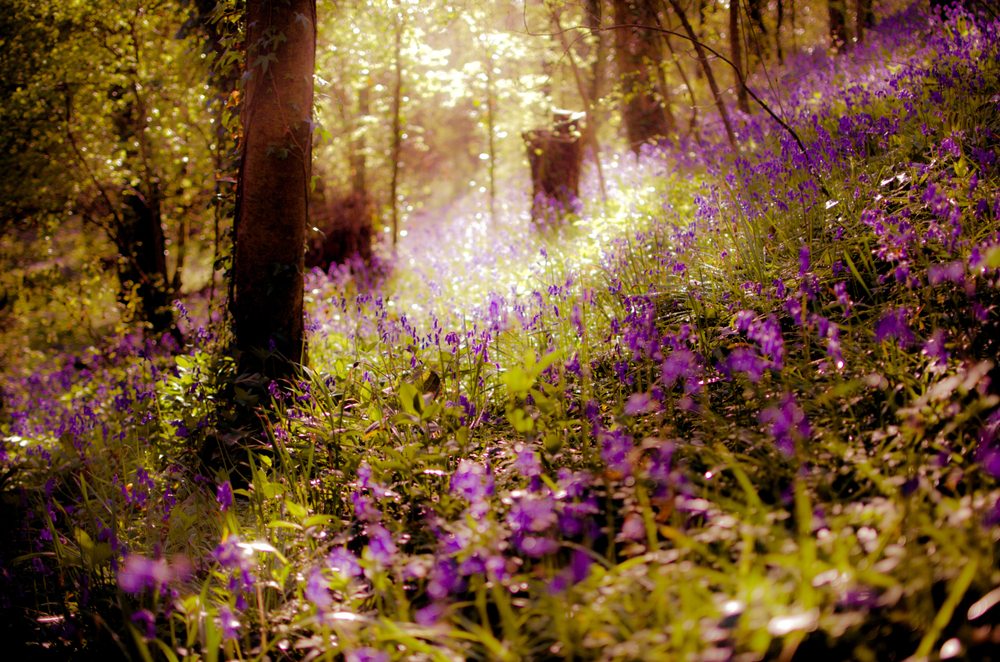
There’s a hush in a British beechwood when the canopy is fresh lime green and the floor goes electric blue. Step in on a calm April morning and you’ll smell hyacinth and rain-soaked earth—what photographers call the “woodland hour.” Bluebells here aren’t just pretty; they’re a sign of ancient woodland and one of the most moving spring sights you can plan for without guesswork.
“Sometimes I need only to stand wherever I am to be blessed.” — Mary Oliver
When and where for bluebells
My sweet spot is the last two weeks of April into the first week of May. South and lowland woods pop first; higher, cooler spots in Wales usually follow by a few days. Watch for a warm spell—one sunny week can flip “just emerging” to “peak” fast.
- Micheldever Wood (Hampshire) — Photogenic beech trunks and sweeping carpets. Aim for weekday sunrise; car park fills by mid-morning on weekends. Easiest by car off the M3 (J8). From London, trains to Winchester plus a short taxi work well.
- Ashridge Estate – Dockey Wood (Herts/Bucks) — Classic, dense blue with airy beech above. Arrive before 8:30 a.m. on peak weekends. Tring or Berkhamsted stations are your gateways; then a quick taxi. The estate sometimes manages access and parking during peak—check the National Trust page.
- Puzzlewood (Forest of Dean) — Fantasy vibes: mossy gullies, roots, and blue haze. It’s paid entry and often muddy (in the best way). Prebook, wear grippy shoes, and expect uneven steps—this one’s about atmosphere.
- Coed Cefn (Crickhowell, Wales) — A lovely Welsh option with fewer crowds. A small car park and a gentle circuit deliver that “sea of blue” with Usk Valley views nearby. Pair it with a café stop in Crickhowell.
Pro tip: the most vivid contrast happens when the beech leaves have just unfurled but haven’t closed the light entirely. If the canopy looks fully lush, you’re late—head to a higher or shadier wood the next morning.
Stay-on-path etiquette
I know the urge to step into the carpet for “the shot,” but bluebells’ bulbs sit shallow, and crushed leaves can starve the plant for next year. UK conservation charity Plantlife notes that trampling damages foliage and reduces flowering—multiply that by a weekend’s worth of visitors and the effect is real. Dogs on short leads, too, especially near nesting birds.
- Keep feet and tripods on marked trails—your photos look cleaner with natural leading lines anyway.
- No picking, no drones, no blanket picnics in the flowers. A telephoto or portrait lens lets you compress the scene from the path.
- Check local guidance: Woodland Trust and Plantlife post bluebell advice and updates each season.
Gardens to pair with woods
Balance the wild with the grand. After a morning among the bluebells, I like a structured afternoon where paths are smooth, cafés are handy, and the color palette widens beyond blue.
- Kew Gardens (London) — Rhododendron Dell and azalea banks blaze through late April–May, with drifts of bulbs and blossom walks. If rain hits, the Temperate House and Palm House keep you exploring under glass. Timed entry is smart on weekends. Easy Tube access.
- RHS Wisley (Surrey) — Battleston Hill turns into a cathedral of rhododendrons and camellias. The Rock Garden and spring borders keep the color going. Train to Woking, then the frequent 715 bus or a short taxi.
- Bodnant Garden (North Wales) — Big views, mirror pools, and valleys of magnolias and rhododendrons. The famous Laburnum Arch usually peaks late May to early June, so earlier visits trade it for blossom-heavy woodland walks. Prebook parking at busy times.
If you’re into data-backed timing, the Woodland Trust’s Nature’s Calendar shows spring events trending earlier over recent decades—bluebells included—which is one reason I pencil in a flexible day. A mild March? I pull the trip forward by a week. A cool spring? I shift it back. Simple, effective.
Rain plan and packing
- Footwear: Waterproof shoes with grip; bluebell soils get slick.
- Clothing: Quick-dry trousers, a lightweight shell, and a warm layer for still mornings.
- Photo kit: Microfiber cloth for mist, a fast prime (35–85mm) for shallow depth, and a phone-friendly tip—tap to lower exposure so blues don’t blow out.
- Color fix: Under green canopy, set your white balance to “shade” or nudge warmth in post; it keeps bluebells blue instead of purple.
Rain actually helps: petals saturate, greens pop, and that post-shower “steam” drifting through a beech aisle is the moodiest frame you’ll bring home all spring.
Accessibility options
- Kew Gardens: Step-free routes, ramped glasshouses, accessible toilets, and mobility hire. Staff are great at suggesting the flattest seasonal loops.
- RHS Wisley: Excellent path network with gradients marked on the map; scooters and wheelchairs can be reserved.
- Bodnant Garden: Some steep sections, but signed accessible routes and shuttle assistance on busy days. Ask at arrival for the best current circuit.
- Woodlands: Dockey Wood and Micheldever have natural, often uneven paths; Ashridge’s Monument Drive is flatter for a woodland feel without roots. Puzzlewood is not suitable for wheels or limited mobility.
One last field note I’ve learned the happy way: go early on a bright-but-cloudy weekday, walk 10 minutes past the first viewpoint, and let the forest breathe. That’s where the magic starts.
Craving the same spring color with painterly symmetry and lakeside villas? What if you could step onto Monet’s bridge in the morning and wander a terraced Italian garden by sunset—without the crowds. Curious how to time that perfectly?
France + Italy: Monet’s Giverny, Loire Châteaux, and Lake Como Villas
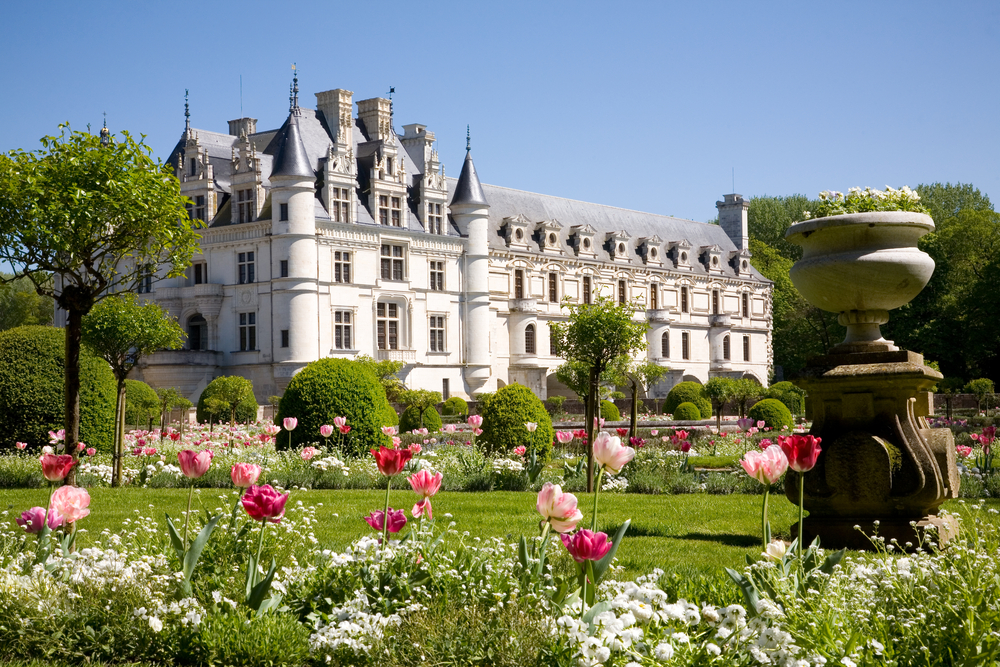
I chase spring color here when I want romance without guesswork: Monet’s painterly pathways, sculpted Loire parterres, and Lake Como villas draped in azalea and wisteria. These places hit that sweet spot between easy logistics and maximum bloom-per-minute.
“I must have flowers, always, and always.” — Claude Monet
Best timing by spot
Giverny (Monet’s House & Gardens) — opens early April; the fullest spring mix lands late April through May. Expect tulips, narcissus, wallflowers, forget-me-nots, and lilacs; wisteria usually trails into late April/early May. Note: the famous water lilies peak in summer, not spring—come now for color layers, not lily pads.
Loire Valley gardens — April–May is prime. Villandry pops with tens of thousands of tulips and razor-sharp kitchen parterres (edible geometry, all year). Chaumont-sur-Loire’s International Garden Festival typically kicks off in late April, bringing creative, themed plots that change annually.
Lake Como villas — mid-April to mid-May is the sweet window. Villa Carlotta is famous for azaleas and rhododendrons that flood the slopes in technicolor. Villa Melzi lines the lakefront with camellias and swooping wisteria—you’ll smell it before you see it.
Spring is shifting earlier across Western Europe, so I build a little flex into plans. Multiple long-term phenology records show earlier flowering with warming trends, which is why a 1–2 day buffer helps catch peak even if the season runs ahead (European Environment Agency).
Tickets and smooth entry
- Giverny: Prebook a timed slot on the Fondation Claude Monet site. Go for the first entry, then head straight to the Water Garden (left path) and the Japanese bridge before tour groups pour in. Circle back to the Clos Normand flower beds and house after 10 a.m.
- Villandry & Chaumont: Weekends sell out in May. Book online—Villandry’s combo tickets (château + gardens) save time at the gate; Chaumont’s Festival has controlled entries and is worth a timed slot.
- Lake Como: Reserve Carlotta/Melzi tickets ahead on spring weekends. Arrive at opening to photograph terraces before the lake breeze picks up and ferries unload.
- Micro-hacks: Midweek beats weekends; a light drizzle day can be magic for saturated colors; most sites restrict tripods and large bags—check rules so security doesn’t slow you down.
Scenic routes and easy bases
- Giverny base: Vernon or Rouen. From Paris Saint-Lazare, it’s ~50 minutes to Vernon–Giverny, then a short shuttle or a flat 7 km bike along the Seine-side path. Grab a bike near the station; it’s a gentle roll to Monet’s gate.
- Loire base: Amboise or Tours. Paris to St-Pierre-des-Corps by TGV is about an hour; pick up a car or hop buses to Villandry (20–30 minutes). Pair Villandry with Chaumont for a full day of formal parterres + avant-garde installations. Cyclists: the Loire à Vélo route threads many gardens.
- Como base: Varenna or Tremezzo. From Milano Centrale, the regional train to Varenna-Esino is about an hour. Ferry-hop the classic triangle—Varenna, Bellagio, Menaggio—with frequent boats from Navigazione Laghi. Morning at Villa Carlotta, lunch in Bellagio, blue-hour stroll through Melzi’s lakeside promenade is a perfect arc.
Photo ideas that actually work
- Giverny: Kneel low at the Water Garden to mirror the bridge in still water. When wisteria is in bloom, use it as a natural frame—but hands off the vines. Inside the Clos Normand, shoot across beds at 45 degrees to layer color without trampling borders.
- Villandry: Climb to the upper terraces; the pattern reads best from above. Add a human scale—one friend on a path—so the geometry doesn’t feel abstract.
- Chaumont: Each plot tells a different story. Walk once, then pick two concepts and return when light softens for cleaner shots.
- Lake Como (Carlotta/Melzi): Golden hour skims the azalea domes and terraces toward the lake. At Melzi, backlight wisteria so petals glow; set your phone to slightly underexpose (–0.3 EV) to keep the purples from washing out.
Little touches that save the day
- Timing: First entry or last two hours are your calm windows. Midday is bus territory.
- Food: Picnic snacks beat queues; in Varenna, grab focaccia at the harbor and eat on the ferry between villa stops.
- Etiquette: Stay on paths, don’t lean over borders, and keep bags off hedges—gardeners will thank you, and so will your photos.
I still remember standing under the wisteria at Melzi, the lake winking through the blooms, thinking, “This is exactly what I came for.” Ready to lock in perfect timing and pack smarter so you can hit this window without stress? In the next section, I’ll share the simple trackers I trust and a no-fuss spring kit—want the checklist I use?
Your Spring Bloom Toolkit: Timing, Packing, and Reliable Resources
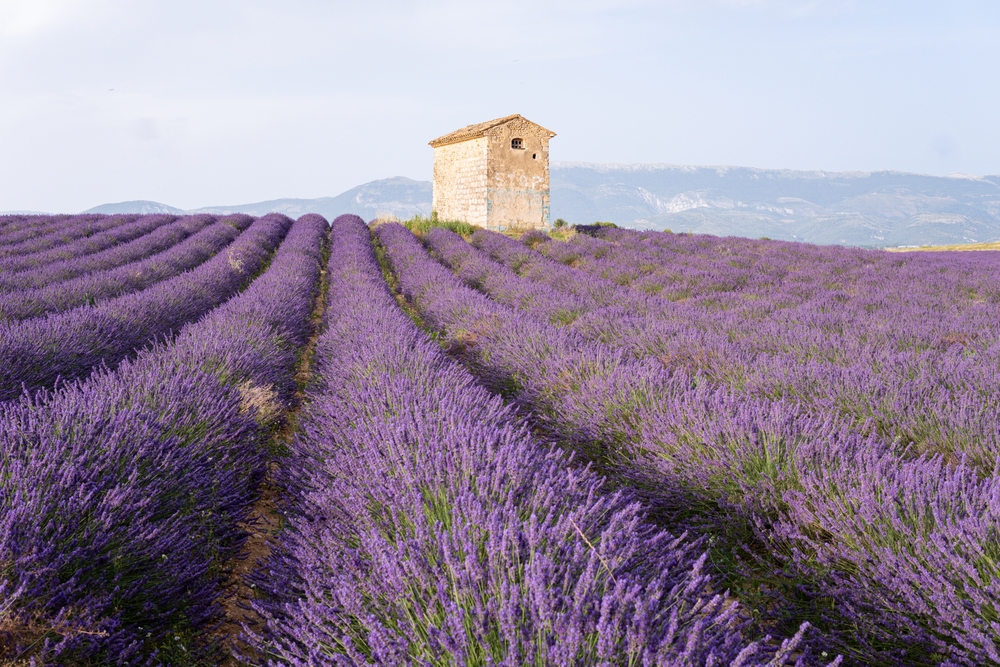
Trackers and timing tricks that work
Peak bloom moves—sometimes by a week—so I use a simple system that stacks long-term data with live signals and a built-in buffer.
- Start with history: Check the last 5–10 years of peak dates for your spot. Washington, D.C.’s records since 1921 show peaks trending earlier and more variable—useful context when you’re picking dates.
- Layer real-time updates: Follow official pages and local boards in the two weeks before your trip. Examples: National Park Service updates for D.C.; sakura forecasts from Japan’s major weather outlets; municipal posts during Istanbul’s Lale Fest; daily notes from gardens like Keukenhof and Ashikaga. Add one community source (local tourism Instagram, neighborhood groups) for on-the-ground photos.
- Watch the weather swing: A warm spell can accelerate blooms by 3–5 days; a cold snap can pause things. NOAA and local meteorological agencies are your friend for 10-day outlooks.
- Use the 3-signal rule: Don’t change plans on one post. Wait for three separate signals—official update, multiple local photos, and a 3–5 day favorable forecast—before you shift dates or destinations.
- Build a Plan B within 60–90 minutes: Pair each target with an earlier or later option nearby. Example: If Tokyo peaks early, keep a late-bloom back-up day north; if tulip fields near Lisse get topped, switch to curated gardens or another bulb region the same day.
- Book a two-night window: Arrive late Day 1, shoot early Day 2, and keep Day 3 morning as a hedge. That single buffer day dramatically raises your odds of catching peak.
- Reserve first-entry slots: Gardens that sell timed tickets usually offer an early tranche—grab it. Then walk directly to the far end first and work back as crowds arrive.
- Bonus: cams and crowds: When available, check live cams (e.g., “bloom cams” around popular lakes/parks) the day before at the same hour you plan to visit to gauge light and foot traffic.
Fast rule I live by: anchor your main bloom walk at sunrise, keep a late-afternoon “second look,” and hold one flexible morning for weather or timing surprises.
What to pack for fickle spring weather
Spring is famous for mood swings. I keep my kit light, waterproof, and photo-ready.
- Layering trio: breathable base, warm mid-layer, and a light rain shell (packs into its own pocket).
- Waterproof shoes + quick-dry socks: damp trails and grassy parks stay wet long after rain.
- Compact umbrella: doubles as a mini light-diffuser for portraits.
- Microfiber towel + zip bags: wipe benches, dry lenses, protect your phone/camera during a sprinkle.
- Allergy kit: non-drowsy antihistamine, saline spray, and tissues. Start the antihistamine the day before a high-pollen day—controlled trials show faster symptom control when you pre-load.
- Sunscreen and sunglasses: overcast still burns when you’re out for hours.
- Power bank and cable: live maps, cameras, and transit apps drain batteries fast.
- Reusable water bottle + small snacks: keeps you out in the good light instead of in a line.
Optional for photos: circular polarizer (for glare on water and waxy tulip leaves), a pocket-sized tripod or bean bag, extra card/battery, and a lens cloth. All-in, this can stay under 1 kg.
Simple photo tips anyone can use
You don’t need fancy gear—timing and angles do 80% of the work. A few easy wins:
- Go early or late: Golden-hour light warms colors and softens skin tones. Landscape preference studies consistently show higher ratings for warm, low-angle light—use it.
- Backlight petals: stand so the sun is behind the flowers and expose for the highlights; petals glow, and greens stay rich.
- Shoot after rain: colors pop when leaves are wet. If it’s drizzling, use your umbrella as a rain shield.
- Overcast = giant softbox: perfect for portraits and true-to-life flower color without harsh shadows.
- Lead the eye: paths, rivers, hedges, and rows make natural leading lines. Visual attention research shows our eyes follow lines—use them to guide the viewer to your subject.
- Phone-first tricks: tap to focus 1/3 into the scene and slide exposure slightly down to avoid blown whites; switch to 2x/3x for cleaner flower frames; try a 3–10 second timer and prop your phone on a bag for tripod-like stability.
- Crowd control: burst mode while you count a slow five—pick the cleanest frame with fewest people.
- Respect boundaries: stay on paths and never step into farm rows; a zoom lens or your phone’s telephoto gives the depth without damage.
Health, allergies, and comfort
Comfort keeps you out there longer—and that’s when the magic shots happen.
- Check pollen forecasts 48 hours out: if counts spike, plan sunrise shoots (pollen is often lower early) and shift indoor gardens or museums to midday.
- Pre-load antihistamines: many non-drowsy options reach peak effect in a few hours—starting the night before a high-count day can help. Always follow your doctor’s advice.
- Hydrate and shade breaks: garden cafés are made for pit stops—use them to reset, review shots, and warm up if a breeze kicks in.
- Protect your eyes and skin: sunglasses cut irritation; SPF keeps you comfortable on reflective water-side walks.
- Woodland extras: tick check after bluebell woods, and consider a light walking pole for uneven paths.
- City parks: watch footing on uneven lakeside paths; avoid bottlenecks by looping the far edges first.
Good reads and route ideas
Two reads I like for European spring routes and photo-friendly stops—easy to pair with the picks on my blog:
- The Best Places for Spring in Europe — a cheerful spark for choosing which bloom vibe you want: city parks, lakes, or storybook towns.
- 6 Beautiful Places in Europe to See Flowers from March to August — handy for stretching spring into early summer if your dates are later.
You’ve got the tools—want me to turn this into a plug-and-play 3-day or 1-week plan with timing baked in and first-entry slots lined up? Keep reading—which bloom are you chasing first?
Pick Your Bloom and Book with Confidence
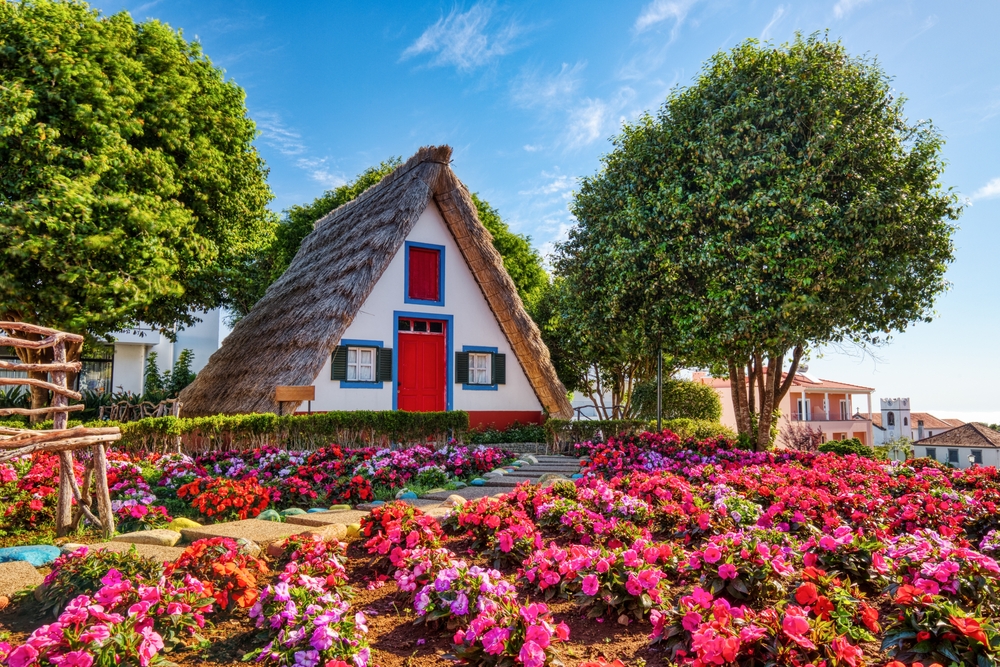
Ready to turn plans into a trip you’ll actually enjoy? Pick a window, snag early entries, and keep one flex day for weather or bloom shifts. A few smart moves now save hours of second-guessing later.
Quick-start itineraries
Three days: Netherlands tulips with zero stress
- Base: Haarlem or Leiden for better prices and easy transport.
- Day 1: Land at AMS, drop bags, stretch your legs in Haarlem’s old town. Early dinner, early night.
- Day 2:Keukenhof first entry (the garden itself recommends early or late for thinner crowds), then rent a bike in Lisse for signed field routes. Golden hour is your moment for photos. If fields are off-timing, stick to garden displays—they’re staged to shine through the season.
- Day 3: Haarlem market + windmill stop, or the Aalsmeer Flower Auction at daybreak for a wow-factor backup.
- Tickets and moves: Use the Keukenhof bus combo from Amsterdam or Haarlem; book the first time slot. Train rides: Amsterdam–Haarlem ~15 min; Amsterdam–Leiden ~35 min.
One week: Washington, D.C. blossoms + Shenandoah wildflowers
- Days 1–3 (D.C.): Sunrise loop at the Tidal Basin, then museums midday while crowds peak. Another morning at the National Arboretum or a respectful walk through Kenwood’s streets. Metro in—parking is a time sink.
- Days 4–6 (Shenandoah): Base along Skyline Drive. Walk Limberlost Trail (flat, family-friendly), catch trillium and spring ephemerals on shady trails, and scan overlooks at golden hour. Plan one short hike and one scenic stop day.
- Day 7: Old Town Alexandria or Mount Vernon for tidy tulip beds and easy strolling before flights.
- Why this works: The National Park Service notes peak bloom is brief—often about 4–7 days depending on weather—so anchoring two D.C. sunrises boosts your chances while the mountain leg adds guaranteed color and scenery.
One week: Paris → Giverny → Loire châteaux
- Days 1–2 (Paris): Settle near a major station for easy day trips. Evening walks along the Seine for soft light on spring borders.
- Day 3 (Giverny): Prebook a timed entry. Train from Paris Saint-Lazare to Vernon-Giverny (~50 min), shuttle to the village. Aim for opening time or late afternoon for calmer paths.
- Days 4–6 (Loire): TGV from Paris Montparnasse to St-Pierre-des-Corps (~1h10), pick up a small car. Villandry for parterres, Chaumont-sur-Loire for art + gardens, and one quieter château for balance. Golden hour from upper terraces = keeper shots.
- Day 7: Return to Paris for a lazy café morning and a park stroll, then depart.
One week: Tokyo parks + a wisteria day trip
- Days 1–3: Base near Ueno or Shinjuku for multiple park options. Hit one sunrise at Chidorigafuchi, another at a quieter canal or neighborhood park. Keep evenings open for illuminations if offered.
- Day 4: Backup north if blossoms slip, or take a rest day—city food halls and small museums are perfect if it rains.
- Day 5 (Wisteria):Ashikaga Flower Park (train ~80–90 min; the station sits by the gate) or Kawachi Fuji Garden near Kitakyushu (timed tickets required in peak season, sold via convenience stores like Lawson). Late April to early May is typical.
- Days 6–7: One more Tokyo park at first light, then a neighborhood ramble (Yanaka or Daikanyama) for cafés and calm streets.
Budget watch-outs and savings
- Book the bottlenecks first: Timed entries for popular gardens, early trains, and any limited-capacity parks.
- Stay one town over: Haarlem or Leiden instead of central Amsterdam; Alexandria/Arlington vs downtown D.C.; Rouen or Vernon instead of Paris-center for Giverny days. Same access, better rates.
- Use the right pass: Keukenhof bus + entry combos save time. In Paris, a Navigo Week is great value if your trip runs Monday–Sunday; otherwise, a Navigo Easy or carnet makes more sense. In Tokyo, load Suica/PASMO and stop thinking about ticket machines.
- Picnic lunches: Markets and bakeries beat queues and bills. Bring a reusable bottle; many gardens have fountains.
- Transport traps: Parking at Loire châteaux adds up. TGV fares jump close to departure. In D.C., rideshares surge during festival weekends—Metro wins.
- Protect the plan: Flexible hotel rates or a one-change plane ticket can save the trip if blooms shift. Weather is the wildcard.
- Go early, always: It’s not just the light—early hours mean fewer people. Even Keukenhof and D.C.’s Tidal Basin are noticeably calmer at opening.
- Connectivity: Grab an eSIM with data so live bloom trackers and transit apps work on the go.
Peak bloom is short on purpose—that’s why it feels special. Plan for it, then leave just enough slack to catch the magic.
Final thoughts (and where to go next)
Pick your week, secure the first entry of the day, and hold a flex day as your ace. If nature runs early or late, you’ll still come home with the photos—and the calm—you wanted.
I’ll keep posting fresh bloom intel, easy routes, and new shoulder-season picks here: https://travelsites.com/blog/. When you’re back, tell me what worked. I’ll fold it into the next round so the next traveler skips the guesswork.
Happy spring wandering—see you among the petals.
Useful references:
- National Park Service Cherry Blossom Bloom Watch (peak often lasts 4–7 days)
- Keukenhof visitor advice (early/late entry tips, transport combos)
- Kawachi Fuji Garden (timed wisteria tickets in peak season)
- Ashikaga Flower Park (seasonal schedules and access)